![]()
![]()
![]()
Use LEFT and RIGHT arrow keys to navigate between flashcards;
Use UP and DOWN arrow keys to flip the card;
H to show hint;
A reads text to speech;
13 Cards in this Set
- Front
- Back

"What type of cell is indicated by the green arrow?
What function does it perform?" |
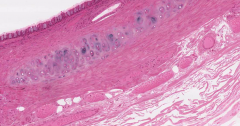
"That is a goblet cell, a mucous-secreting epithelial cell.
You can differentiate it from the neighbouring ciliated lining cells because the goblet cells don't have the cilia and are kinda chunky." |
|
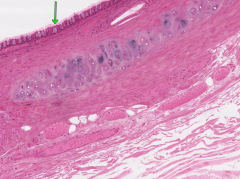
What type of cell is indicated by the green arrow?
|
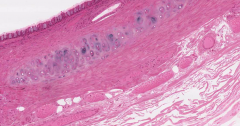
Ciliated epithelial cells.
|
|
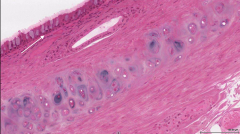
What is the thin layer indicated by the white arrow called?
|
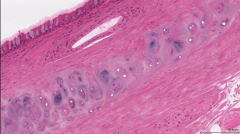
The basement membrane.
|
|
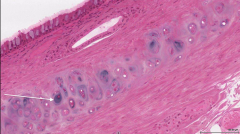
Which layer of the trachea is indicated by the white arrow? What is it composed of?
|
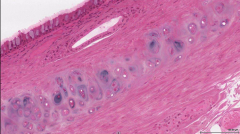
"The cartilaginous layer, made of hyaline cartilage, which is characterized by an absence of vascularity.
You cannot see collagen on these preparations because it's obscured by ""the ground substance.""" |
|
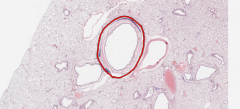
What structure is indicated by the red circle?
|
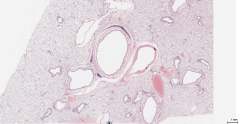
A Bronchus.
|
|
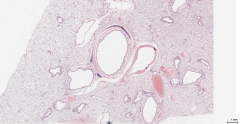
How can you distinguish a bronchus from a bronchiole?
|

"The presence of cartilage, identified with the ground substance, indicated by the red arrow.
Bronchioles also lack any submucosal glands." |
|
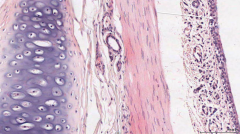
"What layer of the bronchus is indicated by the arrow?
What types of cells does it contain?" |
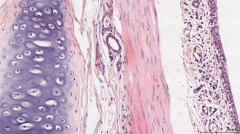
"The lining epithelium (of the mucosa layer).
It consists of pseudostratified columnar epithelium, composed of ciliated lining cells and goblet (secreting) cells. (also, other epithelial cell types)" |
|
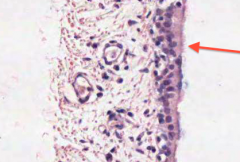
What is the function of the cilia lining the bronchus?
|
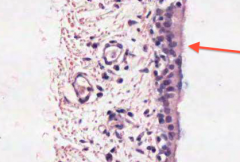
These cilia are smaller than higher up the respiratory tract, but they perform the same function, clearing mucus upwards.
|
|
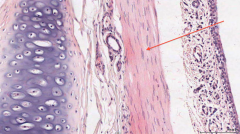
What feature of the bronchus is indicated by the red arrow?
|
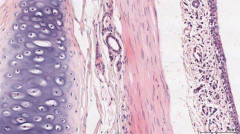
Smooth muscle, in the muscularis mucosa portion of the mucosa layer.
|
|

What structure is indicated by the green circle?
|
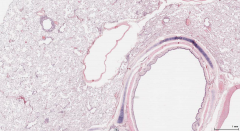
A bronchiole.
|
|
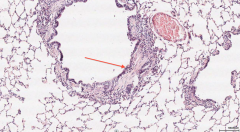
What layer of the bronchiole is indicated by the red arrow?
|
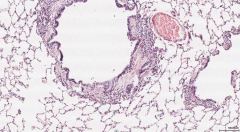
The epithelial cells of the mucosa layer.
|
|
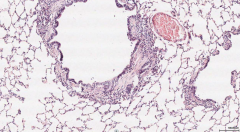
What layers are present in the wall a bronchiole?
|

"1. The mucosa, consisting of the epithelium, the lamina propria (loose connecting tissue), and the muscularis mucosa (smooth muscle);
2. Submucosa; 3. Adventitia. The Submucosa and Adventitia are adjacent thin connective tissue layers." |
|

Identify the structure indicated by the blue arrow.
|
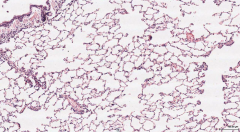
An alveolus.
|

